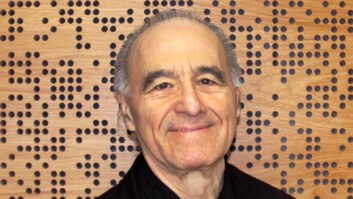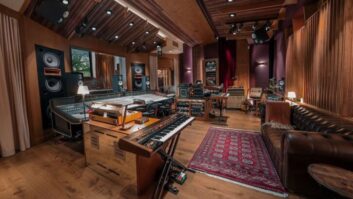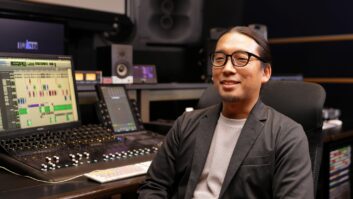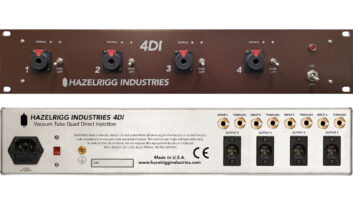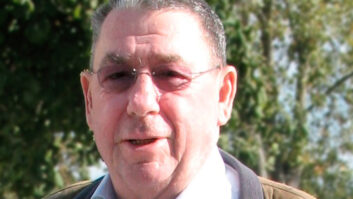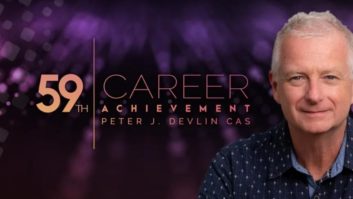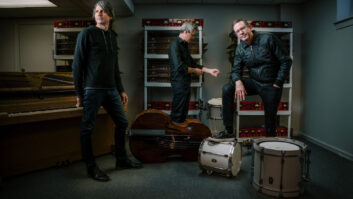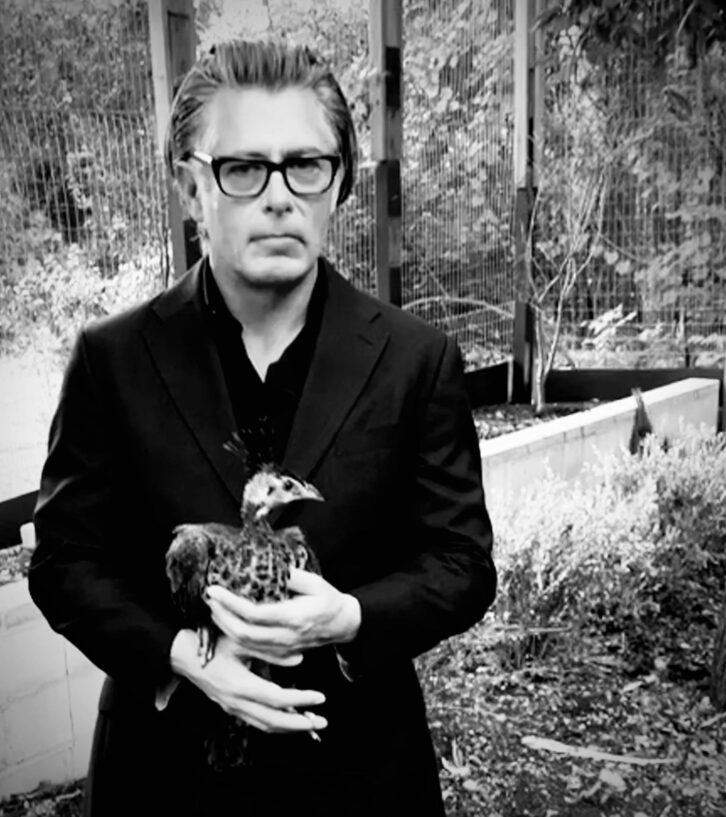
Austin, TX (April 27, 2023)—You may have seen Peter Reardon at a NAMM Show or AES Convention, dressed to the nines and cutting a Robert Palmer-like figure. The man has a definite aesthetic, as evidenced by the products that his company, Shadow Hills Industries, creates—big, black, retro-futuristic boxes with chunky rotary switches, glowing green lights and stark, white, engraved front-panel legends, redolent of a Cold War-era bomber.
Shadow Hills gear is not cheap in any sense of the word, but you get what you pay for, with the company’s modest range of painstakingly designed compressors, microphone preamps and other devices stuffed with quality components that offer functionality and tone for days.
You wouldn’t know it to look at him now, but Reardon started out as a punk rocker in 1980s Houston, Texas, where he grew up. He became familiar with the inner workings of a recording studio by his late teens; hooked up with Southern hip-hop record label Rap-a-Lot as an engineer, producer and remixer; then relocated to Los Angeles, where he headed up the Waxploitation imprint at WEA’s Elektra Records. He was constantly in the studio with the label’s artists, all the while designing custom equipment that would allow him—and, as word of his creations spread, other engineers—new possibilities for shaping sound.
These days, Reardon runs Shadow Hills Industries out of the Texas Hill Country close to Austin, where he is as likely to be found hanging out with his eight peacocks as working on his next product design.
STUDIO PUNK DIY
In the early 1980s, Houston Community College had a music program set up by an enterprising recent graduate from the University of Florida, Mark Erickson, that included eight hours of studio time every week in Carole King’s former facility, which she had donated to the school. That suited Reardon and his Crowd Control bandmates just fine.
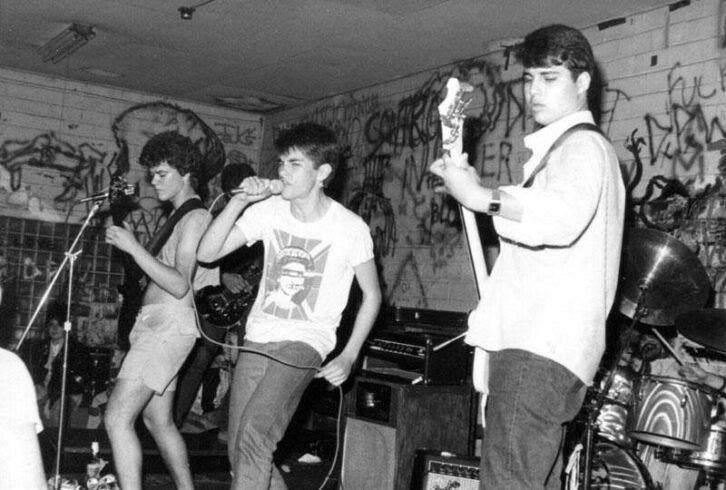
“Our aspiration was to not only make a record, but put it out and to do it ourselves,” he says, noting that they lost access to the studio when their engineer friend, Keith Christiansen, graduated. “The band had a meeting and decided that I would drop out of high school and take his place at recording college. So I did.”
He remembers being very determined in school, sitting in class and thinking, “I’ve got to get in the studio. Please stop talking; just give me the keys and go away!” The studio experience was invaluable, he says, not least because he learned to address challenges such as tape machine alignment and gear repair: “These things are broken; what can we do to fix them?”
Reardon also worked for a time at Houston’s Rap-a-Lot record label, whose flagship act was the Ghetto (later, Geto) Boys, acting as engineer and producer and helping the label’s songwriters and beatmakers see their visions through to a finished product. “I would do engineering, recording and mixing,” he says, “and then I would do all the album covers and the master—I guess they call it production supervision. It was a really wild time, with some unusual people.”
He went on to work as president of Elektra’s Waxploitation label, home of Chris Vrenna’s Tweaker project, among others. “But the creative, fun things for me were mixing records and making my own gear, just because I wanted to do something different,” Reardon explains. The only problem, he adds, was that inevitably someone at the studio would fall in love with his latest piece of gear and insist that he leave it behind—so he’d have to make another.
At the time, Reardon was haunting military and test equipment surplus houses with their racks of Cold War-era gear sturdy enough to withstand a nuclear apocalypse. “Even in those days, the late ’90s and very beginning of the 2000s, all of the gear that I was making looked exactly the way it does now. Someone described it as having come out of the cockpit of a B-52.”
It wasn’t just the aesthetics of the equipment of that era but also the performance of the classic pieces of audio electronics from the period that he found inspiring. “This idea that electronics could transform the resolution of your material and could also impart a characteristic that was not just subtle, was a very vibrant set of sonic doors to go through,” he says. “It would just immediately take you to a place of what a record sounds like.”
BECOMING A BUSINESS
Reardon had primarily been making custom mastering consoles at the time, and by his estimation, there is still “a couple dozen of them in the world.” However, things took a turn when he received a call from Jeff Ehrenberg, co-owner, with Pete Lyman, of Infrasonic Mastering and senior sales consultant at then-recent startup retailer Vintage King Audio.
Reardon recalls: “Jeff said, ‘I understand that you have these mastering consoles and people really like them. I’m going to be doing a microphone shootout at my studio. Would you mind loaning me one?’ At the end of it, I went to pick it up and he said, ‘I’m so sorry, Peter; I sold it.’ He’d tricked me into being a business— because that’s what he’d wanted the whole time!”
Ehrenberg wasn’t finished. Noting that mic preamps sold well for Vintage King, he asked Reardon if he had thought about making one.
“I said, ‘I would never make a mic pre; there are so many great mic pre’s that I really enjoy on the market—but if I did, there are some transformers that I’m really interested in and that I developed. I think I would make a matrix that would switch between them.’ Jeff said, ‘Would you make them for me, just for my studio?’”
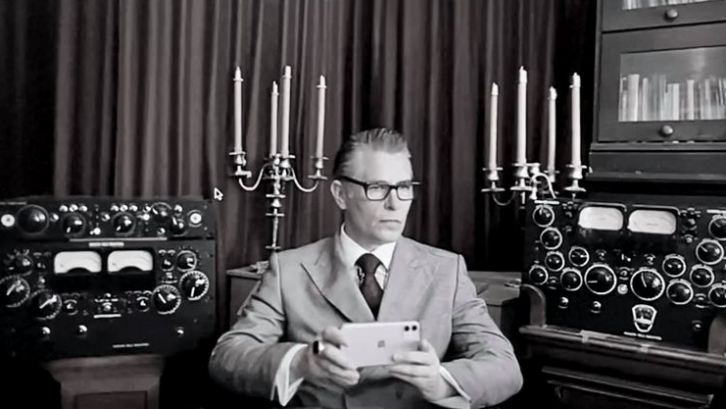
When Reardon realized that WEA label executives were not taking the threat of the Napster file-sharing app seriously, he took the opportunity to leave Waxploitation and start his own equipment manufacturing business. When Ehrenberg pointed out that he needed a company name, Reardon looked to his mastering console with the 1940s vintage VU meters made by Weston Industries. “My studio was in Shadow Hills, California,” he says simply. “I’ll be Shadow Hills Industries.”
Plus, he says, “In my punk rock days, I used to be really into Big Black and Steve Albini, and would follow the bands he produced,” including UK punk/industrial band Head of David. “They had a song called ‘Shadow Hills California,’ and I always thought that was such a cool song.”
DESIGNING QUALITY
“It’s important to limit the number of things that change at the same time,” Reardon says of his iterative process in designing products. “A lot of it involves super-critical listening to program material and having really pure paths where nothing else is changing or influencing things.” It’s easy to be deceived by level changes or by the time it takes to patch between two options, he says. “You have to exactly match to a tenth of a decibel and then discern differences, listen in multiple environments, then listen over time and make sure things continue to hold up the way you expect. It’s a bunch of work, but it can be very rewarding.”
Everything is achieved using attenuators and actual iron, he says, “so it’s going to have to be a certain way. It’s not going to be software or a lot of integrated circuits doing modeling or simulation. Our modeling is, ‘It’s a physical object.’” Speaking of iron, the heart of almost every Shadow Hills product is that transformer switching matrix he told Ehrenberg about. It works like the pickup switch on an electric guitar, allowing a user to flip between three transformers—nickel, iron and steel.
Review: Shadow Hills Mastering Compressor
“The idea behind the matrix was that it would be from the least distorted, the least amount of harmonic saturation and the highest fidelity, down to the grittiest, saturated steel transformer,” Reardon explains.
The switching matrix enables an engineer to flip between transformers without moving from the monitor sweet spot. “To really make discerning choices, it’s good to hear things at the same level and without moving your head,” Reardon adds. “To be able to switch between the transformers, even though it is a subtle change, is something that is worthwhile—and I put it in there, just like most of the functions, because I wanted it.”
THE SUPPORT TEAM
Inevitably, there are cheerleaders who help put any company on the road to success. One such person for Reardon was engineer and producer Rich Mouser, at whose L.A. studio— The Mouse House—he often worked. “He was so inspirational; I learned so much from him and the way he listens that carried over into audio design,” Reardon says.
An early champion of Shadow Hills products was mix engineer Michael Brauer. “Michael is a real true believer,” Reardon says. “He ordered our first mastering compressor, sight unseen.” Those early units had “a hundred miles of wire” in them, he says, and were labor intensive. The problem—and it was a good problem—was that orders were streaming in, so the company had to develop ways to get products out the door faster without compromising quality. “It was a real journey,” he says.
Pete Lyman, Ehrenberg’s studio partner, was another early supporter. “He bought something that turned into the mastering compressor; his was the very first commercial one sold,” Reardon notes, adding that it was right at the time that Vintage King was getting underway. “We were one of the principal brands that helped to build their brand.” Subscribers to the GearSlutz forum were also starting to talk about Shadow Hills gear. (Shadow Hills gear is available domestically only via Vintage King and Sweetwater.)
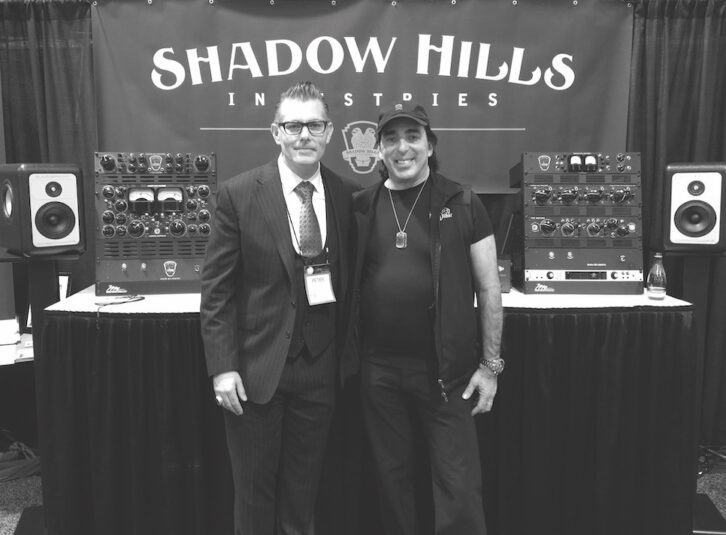
Brauer bought all of Shadow Hills’ products over the years. “He’d bring people over at trade shows. Chris Lord-Alge did the same. They were all very generous with their accolades and appreciation. It’s important to not take that for granted or monetize the people who love our gear,” Reardon says.
Guitar-maker Paul Reed Smith, another Shadow Hills fan, inspired the latest addition to the product line, which will debut at the 2023 NAMM Show. Reardon had heard that Smith and others liked to run signals through two Shadow Hills compressors to combine different transformers’ tones. “I had to see what Paul Reed Smith was talking about, and it is pretty cool,” he says.
As a result, Reardon has now added a fourth position on the matrix to combine the transformers and will debut it on a limited-edition 500 Series Mono Gamma Golden Age mic-pre module at NAMM this month. “It will have an engraved copper front panel like one of those wild, old Fairchilds, with a beautiful patina.”
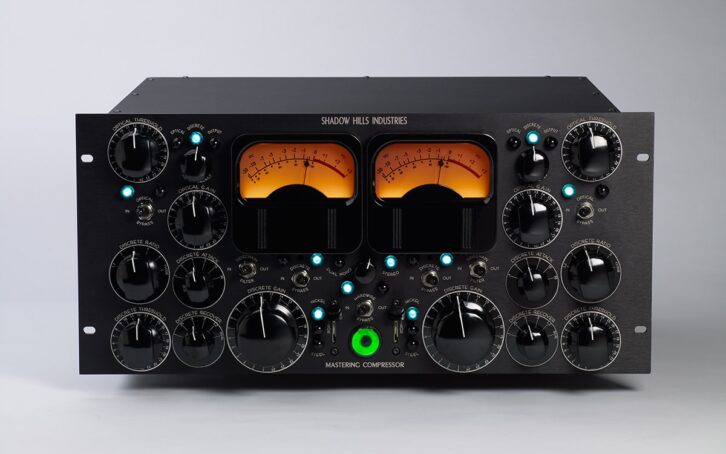
THE SOUND OF HARDWARE
With the bill of materials alone costing more than the retail price of many compressors, Reardon was open to the creation of an affordable software emulation of his Mastering Compressor. “It seemed like it could be a way to do marketing without having to place ads in magazines; a way to extend my reach,” he says.
As for how it compares to the hardware unit, a box costing in the high four-figures, “It’s a really different thing, but something that’s important for accessibility and for people to find out about. My idea was that we could make something really great that would be a great experience and that’s a real Shadow Hills product.”
That’s because ultimately, Reardon stresses, Shadow Hills products are intended to inspire users and help bring their creations to fruition. “What we’re focused on is making something more and more sound like a record; that’s really our job,” he says.
“The result now is that lots of records have a little piece of me on them. I’m grateful for that; it’s really heartwarming. I know it sounds corny, but it’s true, because these are all my children and they have so much of me in them. That Shadow Hills products are ravenously appreciated is an incredibly fulfilling experience and much more than I thought I would ever have from dropping out of high school to make some wild punk rock recordings.”
